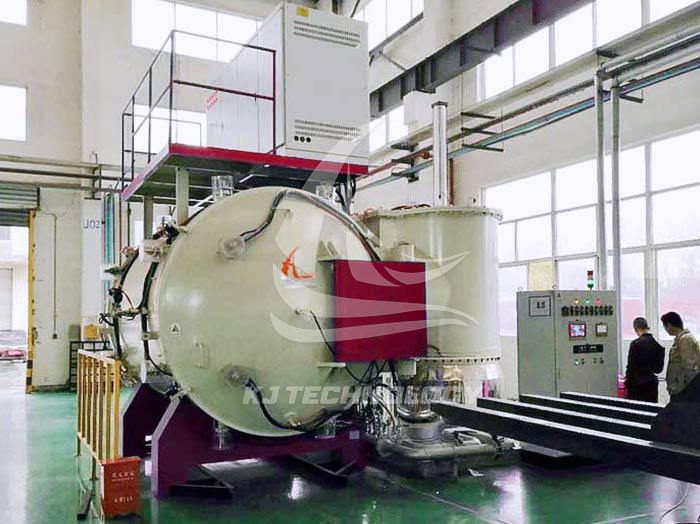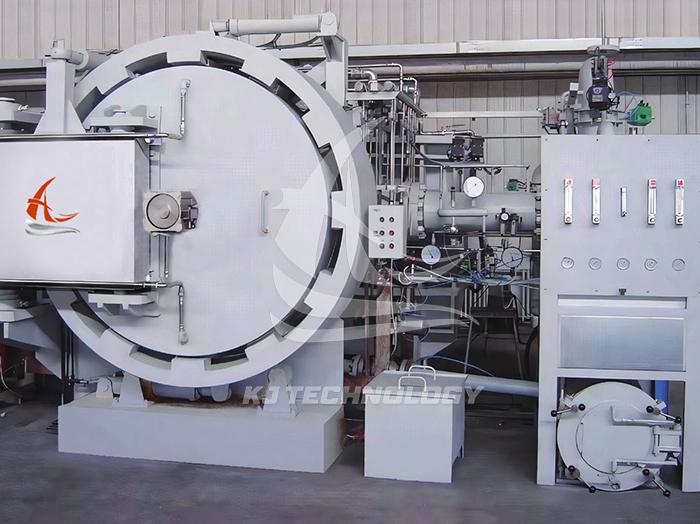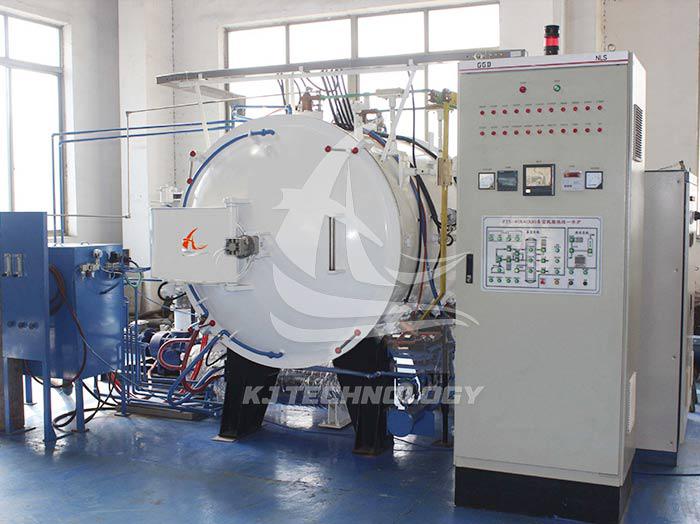Characteristics of high vacuum hot pressing furnace
 06-24-2025 Author: KJ technology
06-24-2025 Author: KJ technology
As a key equipment for advanced material preparation, the high vacuum hot press furnace is mainly characterized by four aspects: environmental control accuracy, process adaptability, equipment stability, and operational convenience. The following analysis is conducted from the dimensions of technical parameters, functional design, and application advantages:
1. Core performance characteristics
Extreme Vacuum and Atmosphere Control
Vacuum degree: It can achieve ultra-high vacuum levels ranging from 10 ⁻³ Pa to 10 ⁻⁵ Pa (such as molecular pump+ion pump combination), effectively avoiding material oxidation, degassing, and impurity pollution.
Atmosphere regulation: Supports precise control of inert gases (Ar/N ₂), reducing gases (H ₂), or mixed atmospheres to meet the sintering needs of different materials (such as ceramic densification, metal diffusion welding).
High temperature and high pressure coupling capability
Temperature range: up to 2200 ℃ (graphite heating element) or 2800 ℃ (induction heating), suitable for sintering ultra-high temperature materials such as silicon carbide and boron nitride.
Pressure range: The pressure can reach over 50MPa, and uniform pressurization can be achieved through hydraulic or pneumatic systems to promote material densification (such as powder metallurgy and composite material forming).
High precision temperature control and pressure control
Temperature uniformity: The temperature difference inside the furnace is ≤± 5 ℃ (achieved through multi zone independent temperature control and hot air circulation system), ensuring the consistency of material sintering.
Pressure stability: Pressure fluctuation ≤ ± 1%, meeting the requirements of precision molding (such as semiconductor ceramics, optical crystals).
2. Structure and Material Design
High temperature and corrosion-resistant furnace body
Furnace material: Made of high-purity graphite, silicon carbide or molybdenum alloy, with high temperature resistance and strong thermal shock resistance.
Water cooling system: Double layer water cooling structure (furnace body+electrode) prevents high temperature from being transmitted to the outside, extending equipment life.
Modular design
Detachable furnace: easy to clean and maintain, reducing downtime.
Quick mold changing device: supports quick replacement of molds of different sizes, suitable for small batch production of multiple varieties.
3. Safety and reliability
Multiple security protections
Overtemperature protection: Independent overtemperature alarm cuts off power to prevent damage to heating elements.
Pressure overload protection: dual protection of mechanical safety valve and electronic pressure limiting device.
Vacuum leak detection: Real time monitoring of vacuum level, automatic shutdown and alarm in case of abnormalities.
Long-Life Technology
Heating element: Graphite heating element has a lifespan of over 2000 hours (depending on operating conditions) and low maintenance costs.
Sealing element: using fluororubber or metal sealing, high temperature resistance and long service life.
4. Intelligence and operational convenience
Fully automated control
PLC+touch screen: supports programming and storage of parameters such as temperature, pressure, vacuum degree, time, etc., and can preset multiple process curves.
Remote monitoring: Real time monitoring and data recording of device status through Ethernet or Wi Fi.
Human computer interaction optimization
One click start: Simplify the operation process and reduce the risk of manual intervention.
Fault self diagnosis: The system automatically identifies and prompts the cause of the fault, reducing maintenance time.
5. Typical application advantages
Material performance improvement
Density: Through hot pressing technology, the density of materials can reach over 99% of the theoretical density (such as hard alloys and ceramic based composite materials).
Microstructure control: Grain refinement under high temperature and high pressure significantly improves mechanical properties (such as increasing fracture toughness by more than 30%).
Process efficiency optimization
Shortening sintering time: Compared to atmospheric pressure sintering, hot pressing technology can shorten the time by more than 50%.
Reduce energy consumption: Efficient heating and insulation design reduces energy consumption by 20% to 30%.
Summarize
The high vacuum hot press furnace significantly improves the efficiency and quality of material preparation through core advantages such as extreme vacuum, high temperature and high pressure coupling, and high-precision control, especially suitable for fields with extremely high requirements for density, microstructure, and purity (such as aerospace, semiconductors, and new energy). Although the equipment cost is high, its long-term benefits (such as reducing scrap rates and shortening research and development cycles) make it the preferred equipment for high-end material manufacturing.








